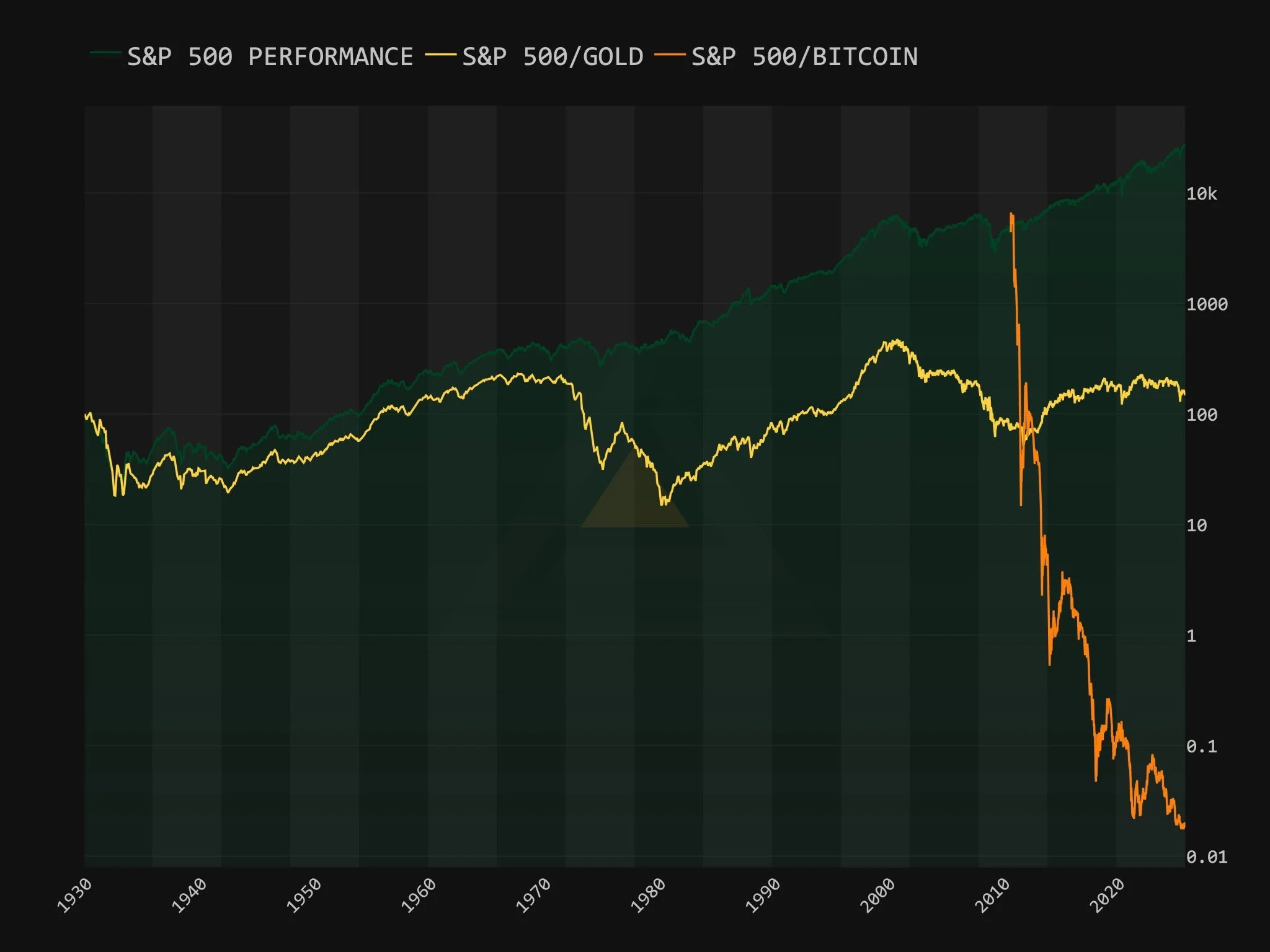Balaji Srinivasan Challenges S&P 500 Gains Versus Gold and Bitcoin
Prominent tech investor and former Coinbase CTO Balaji Srinivasan has reignited debate about the true value of stock market gains, claiming that the S&P 500’s rally is an illusion when measured against real assets like gold and Bitcoin.
On November 9, 2025, Srinivasan wrote on X (formerly Twitter):
“The S&P 500 is up in nominal terms, flat in gold terms, and down in Bitcoin terms.”
Source: @balajis on X
His post highlights a long-running theme in crypto and alternative finance circles that fiat-based asset growth may mask underlying currency debasement, and that only hard or decentralized assets reveal true purchasing power.
Measuring in “Sound Money” Terms
Srinivasan’s statement is rooted in an alternative framework for value measurement that questions the reliability of fiat currencies as a baseline.
Nominal Terms: Measured in dollars, the S&P 500 appears strong.
Gold Terms: When adjusted for the rise in gold, stock gains vanish, implying that equity returns only match inflation or monetary expansion.
Bitcoin Terms: In BTC, the S&P’s purchasing power has fallen sharply, suggesting that fiat-based returns have underperformed decentralized digital assets.
This analysis reflects a worldview where “hard money” assets, such as gold and Bitcoin, are seen as the ultimate benchmark for economic reality.
“Fiat markets inflate nominally,” one analyst summarized, “but in hard money terms, they’re standing still.”
Gold and Bitcoin: Parallel but Divergent Safe Havens
Both gold and Bitcoin have rallied sharply in 2025, but for different reasons:
Gold: Demand is being fueled by central banks diversifying away from the U.S. dollar, especially amid geopolitical conflicts and declining global confidence in Western debt instruments.
Bitcoin: Institutional adoption, the spread of Bitcoin ETFs, and growing distrust in traditional finance have positioned BTC as digital gold, a store of value outside the fiat system.
While gold reflects traditional hedging behavior, Bitcoin represents a digital, decentralized alternative, both converging in purpose as hedges against inflation and monetary uncertainty.
What It Means for Investors
Srinivasan’s statement invites investors to rethink traditional metrics. While the S&P 500’s nominal returns appear strong, they may not represent real wealth gains once inflation and currency depreciation are factored in.
For long-term investors, this highlights a key philosophical divide:
Traditional investors view the dollar as a neutral yardstick.
Sound money advocates see gold and Bitcoin as true units of economic reality, immune to policy-driven dilution.
Both sides agree, however, that diversification across asset types, including equities, precious metals, and digital assets, remains critical in an uncertain macroeconomic landscape.
Conclusion: Measuring Wealth in a Changing World
Balaji Srinivasan’s critique is about perspective.
His claim that the S&P 500 is “flat in gold terms and down in Bitcoin terms” challenges the illusion of growth in a money-printing era.
As gold and Bitcoin both test all-time highs, his message resonates with a growing movement that believes fiat returns are no longer the ultimate measure of prosperity.
Whether one agrees or not, his challenge underscores a fundamental question for investors in 2025:
What does it really mean to be “richer” in dollars, or in value?
